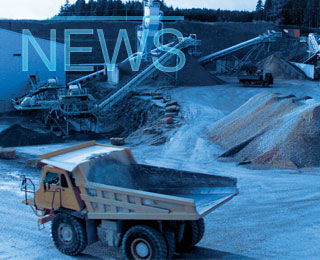Indian cement volume growth recovered to a healthy 7-8 per cent YoY in the last quarter (1 January 2024-31 March 2024) of FY23-24, on aggressive volume push, after growing ~15 per cent YoY in the first half of the year and logging a moderate slowdown in the third quarter due to regional hindrances, according to CRISIL MI&A Research. This ensured a third straight year of healthy demand growth at ~11 per cent to ~441Mt. On this high base, CRISIL expects cement demand growth in India to cool to 6-7 per cent in FY25 (1 April 2024-31 March 2025).
However, pan-Indian cement prices took a beating in the second half of FY23-24 amid increasing competition and higher supply in the market, causing them to plunge by INR40-45/bag in the five months (November 2023-March 2024) since the last price hike in October 2023. Against the trend of firm pricing in the early months of the fourth quarter (and a price drop in March due to the year-end volume push), January and February did not see sustained price hikes this year, highlighting the elevated competitive intensity in the market.
An aggressive volume push at the expense of pricing resulted in an around six per cent sequential decline in average cement prices to INR370-375/50kg bag in the 4QFY23-24. Overall, cement prices have been subdued, declining around 1.5 per cent to INR383-385/50kg bag on average in FY23-24 from an all-time high of INR391/bag in FY22-23, says CRISIL.
On the profitability front, benign costs brought a sigh of relief to producers in FY23-24. Although international coal and petcoke prices continued to decline sequentially, by approximately seven per cent and 11 per cent, respectively, in the fourth quarter, a focus on market share is estimated to have shrunk margins by 120-170bps QoQ. On an annual basis, power and fuel costs, accounting for 30-35 per cent of total costs, declined 16-18 per cent in FY23-24, mainly due to the dip in Australian coal prices by around 58 per cent and international petcoke prices by roughly 38 per cent YoY. As a result, profitability is expected to recover in FY23-24 with a 300-350bps expansion, reaching approximately 17 per cent.
In FY23-25, CRISIL forecasts a 9-11 per cent correction in power and fuel cost led by a softening of petcoke and coal prices. Freight expenditure is also expected to decline by 1-3 per cent on the back of lower diesel prices, combined with producers’ efforts to improve lead distances through aggressive expansions. Raw material costs, however, are expected to remain range-bound, with better availability of fly ash and slag limiting any significant increase.
